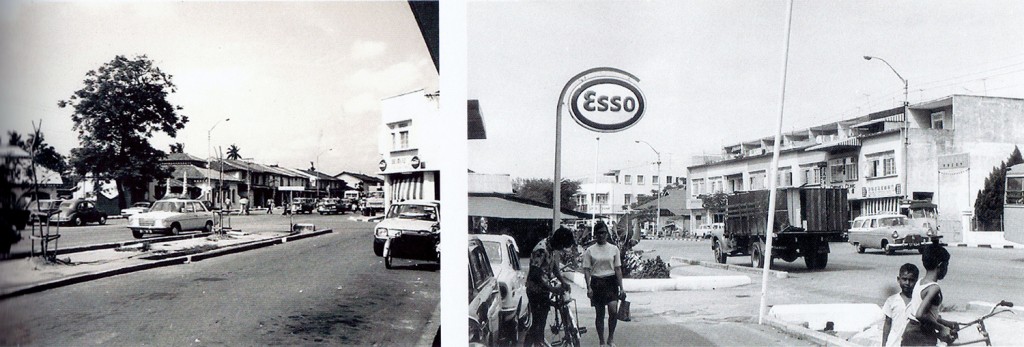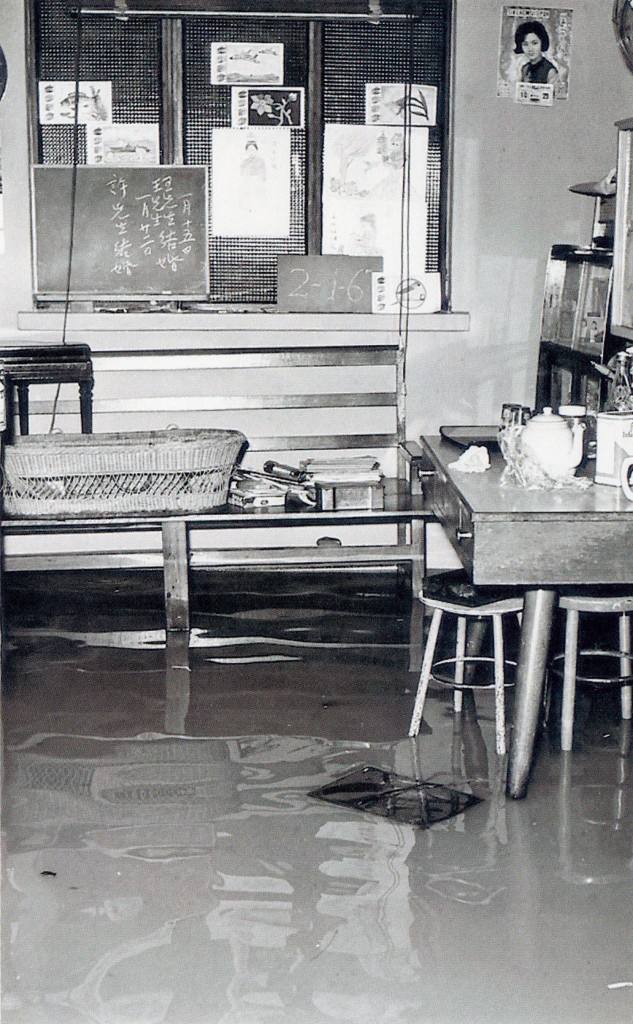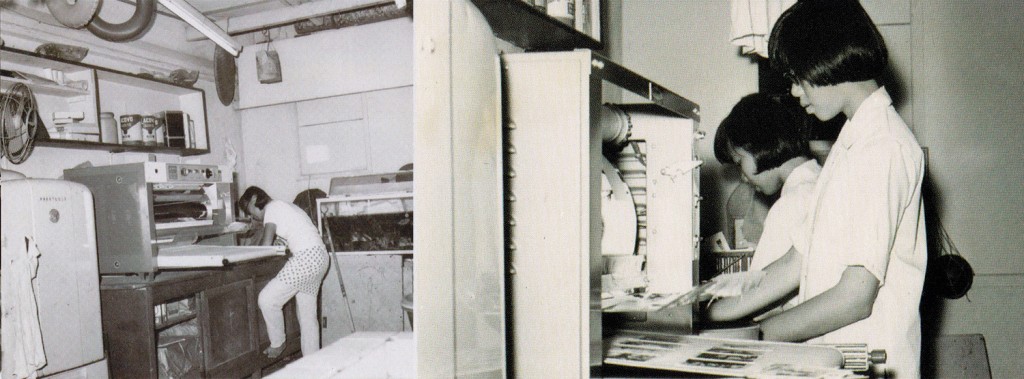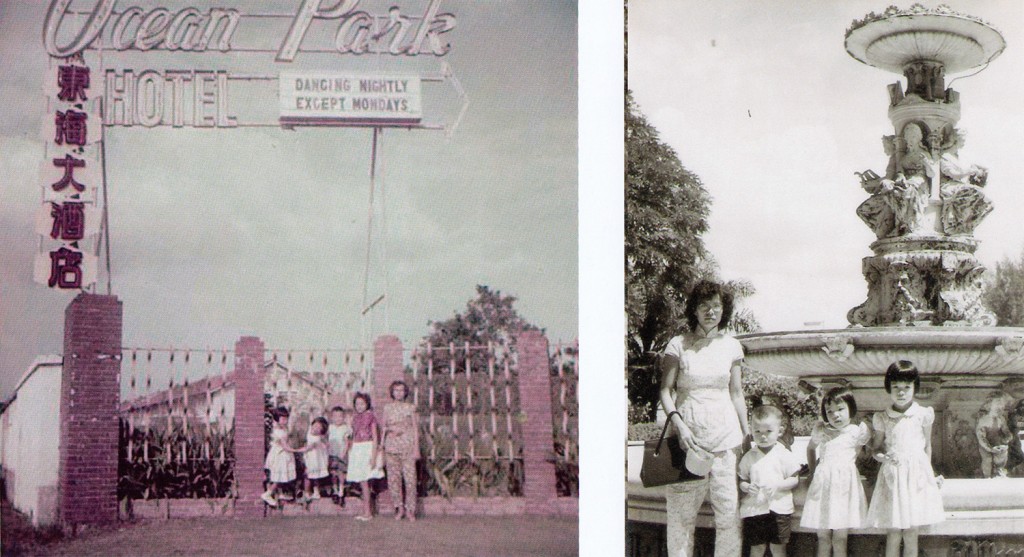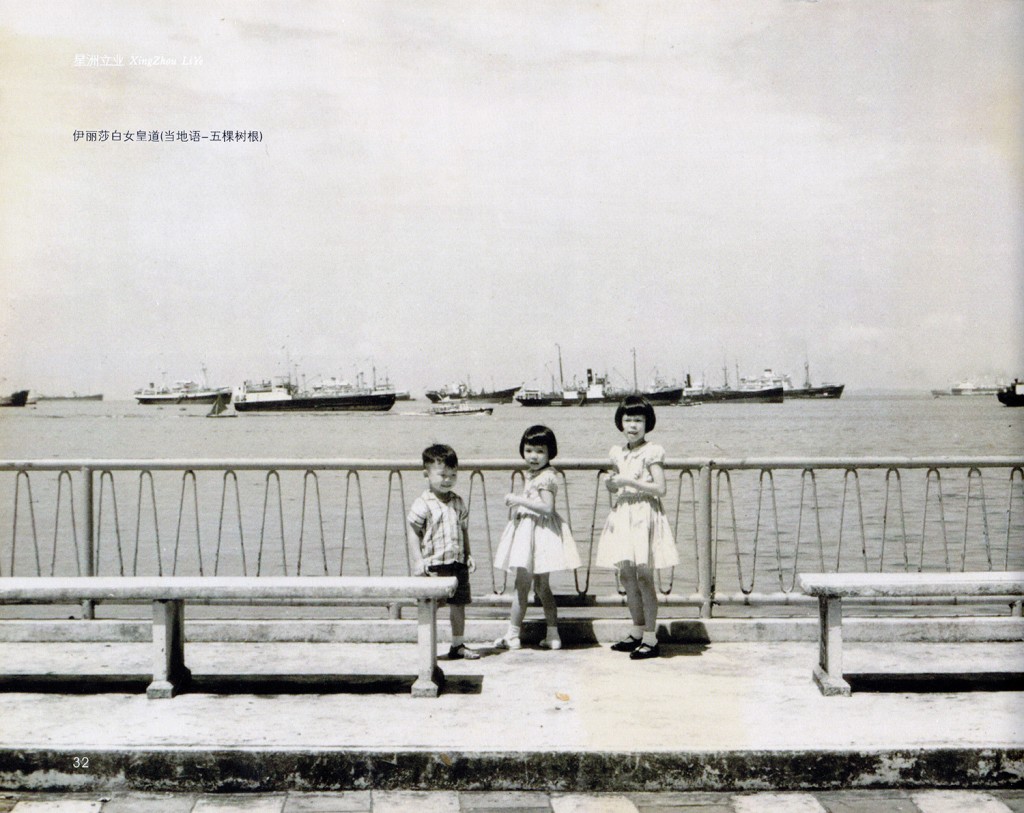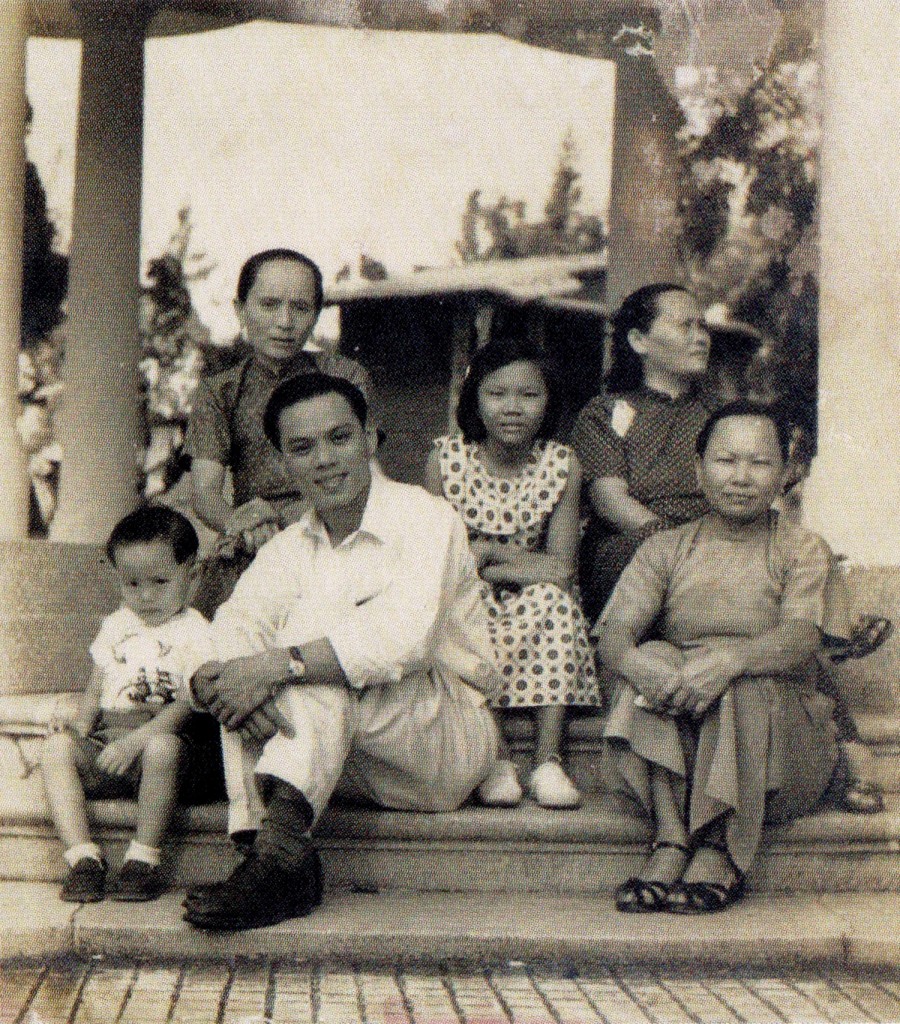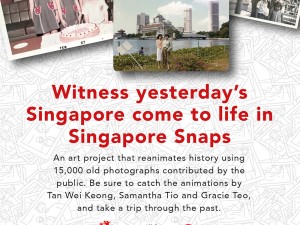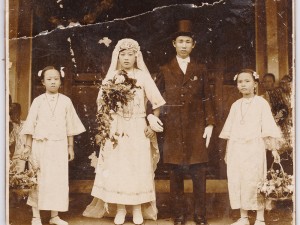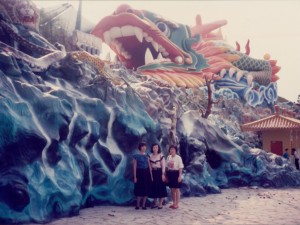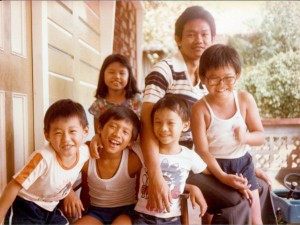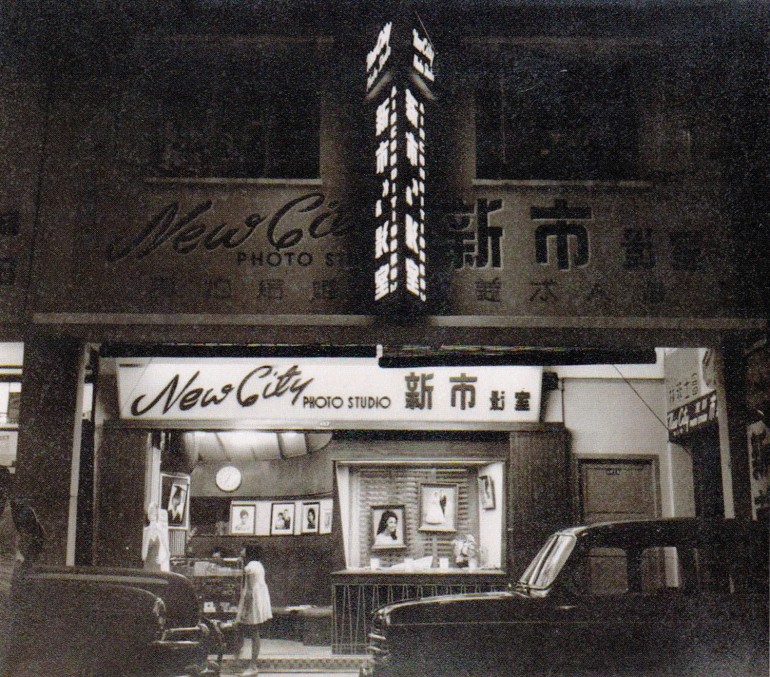
People take photographs for various reasons – as a way to remember events, as a creative expression, and with the rise in popularity of smartphones, as a form of communication between friends and loved ones. Angela Kuet, with her three siblings, grew up at her father’s photo studio and to them, photography is family. Her father, Kuet Gin Bok, set up the “New City Photo Studio (新市影室)” from 1958 – 1987. The shop was located at Changi Road 五条半石 which, in Mandarin, means 5 miles and a half from the city centre.
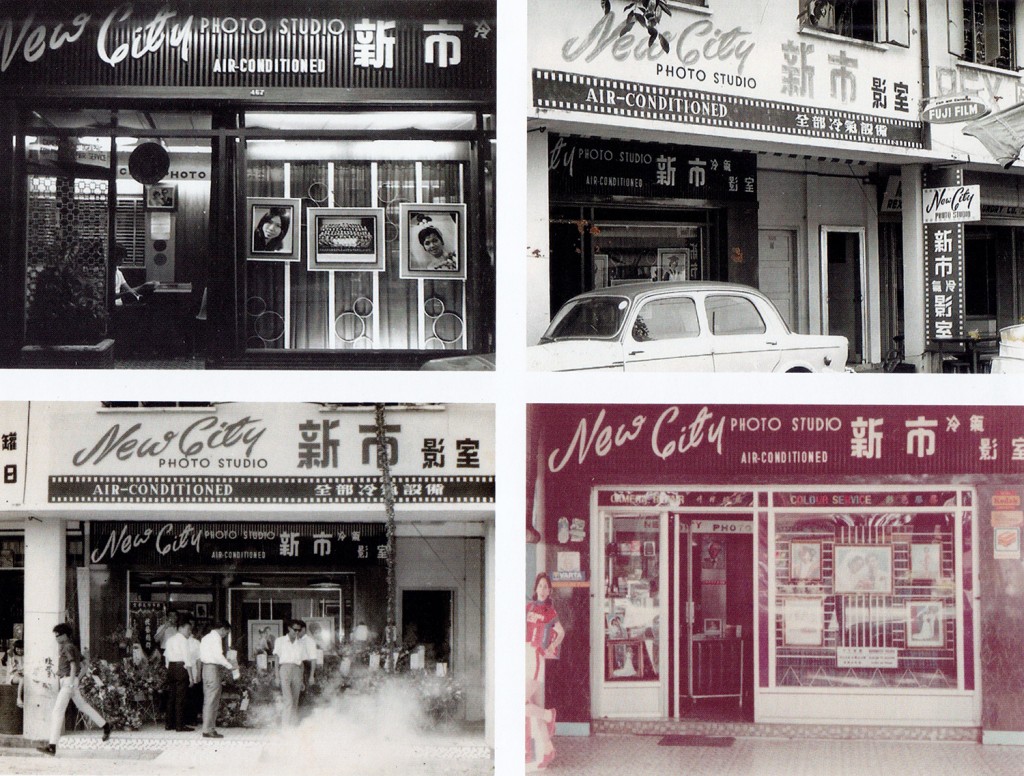
The various facades of the studio in the 1960s and 1970s. Bottom left: Firecrackers were used to celebrate the 9th anniversary of the studio.
The busiest time every year at the studio was always immediately after the Chinese New Year celebration, when an increase in photo print requests meant working into the wee hours at the photo studio for the Keuk family. After the doors closed at 9pm, Gin Bok would enter the dark room to develop films and prints. The dark room is perpetually humid. And with chemical solutions and water running continuously, Angela worried for her father’s rheumatism. His fingers were stained brown from the chemical solutions, which are mixtures of powder formula and water of right proportions. Films and prints are meticulously soaked in these solutions, before running through with clear water.
Angela remembered him to be an extremely hardworking father, who would work long hours to provide for his family of six. Despite his busy schedule, Gin Bok insisted driving the children to their school. There were times when he was delayed in the studio, which meant teary eyes for the children who had to wait patiently at the school gates for their father to fetch them.
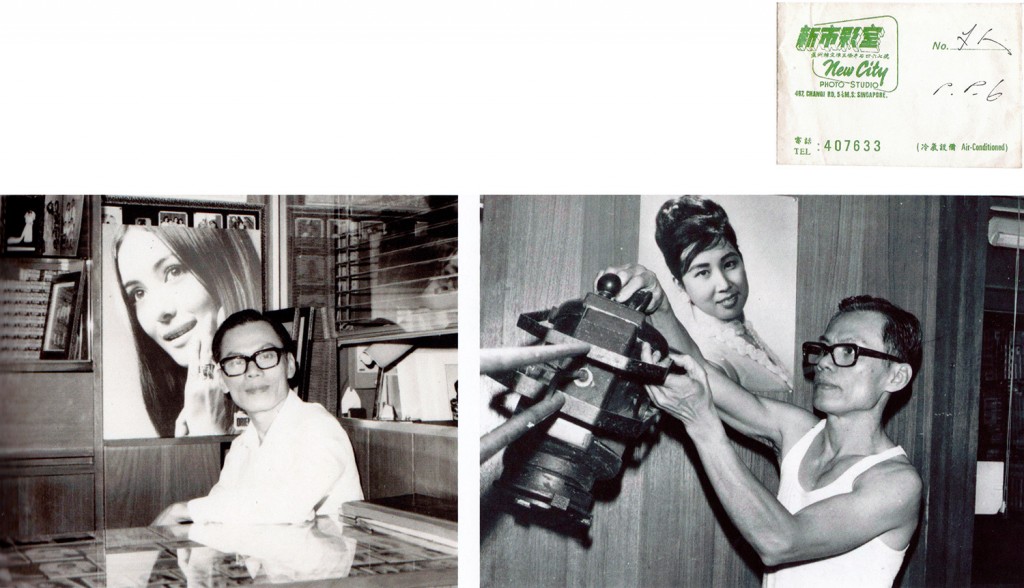
Kuet Gin Bok in his studio (left) and repairing a studio spot light. Top right: An old envelope for the photographs.
Gin Bok voluntarily took photos for the neighbours and friends, including the kacang putih seller, who sells Indian snacks typically made of nuts and spices. He was well-liked by his customers due to his photography skills and eloquence, and thus the studio was the meeting point of friends and relatives.
“Life was simpler,” said Angela of the good memories growing up at the photo studio. Floods were common and water would overflow into the shop space. The family would prop the equipment up on tables and stilts to keep them dry. Together with her elder sister and two younger brothers, she remembered each day filled with tasks with for the family business, like drying the photos in a giant air dryer and cutting the photo borders away to the correct sizes. The studio closes on Fridays.
Angela says of her childhood growing up with her siblings, “We were so fortunate that my father used to take us out for activities on Fridays or school holidays. We went swimming at the Changi seaside, visited and took photos at popular sites like the Queen Elizabeth Walk, Botanic Gardens, Fort Canning Hill, National Theatre,Van Kleef Aquarium, Mount Faber and Katong Park. We also visited our maternal grandmother at her coffee shop. Sometimes after the studio closed at 9pm, we would follow my father to send some photos for framing, colouring (for the black and white photos) or to send the clients’ cameras for repair.”
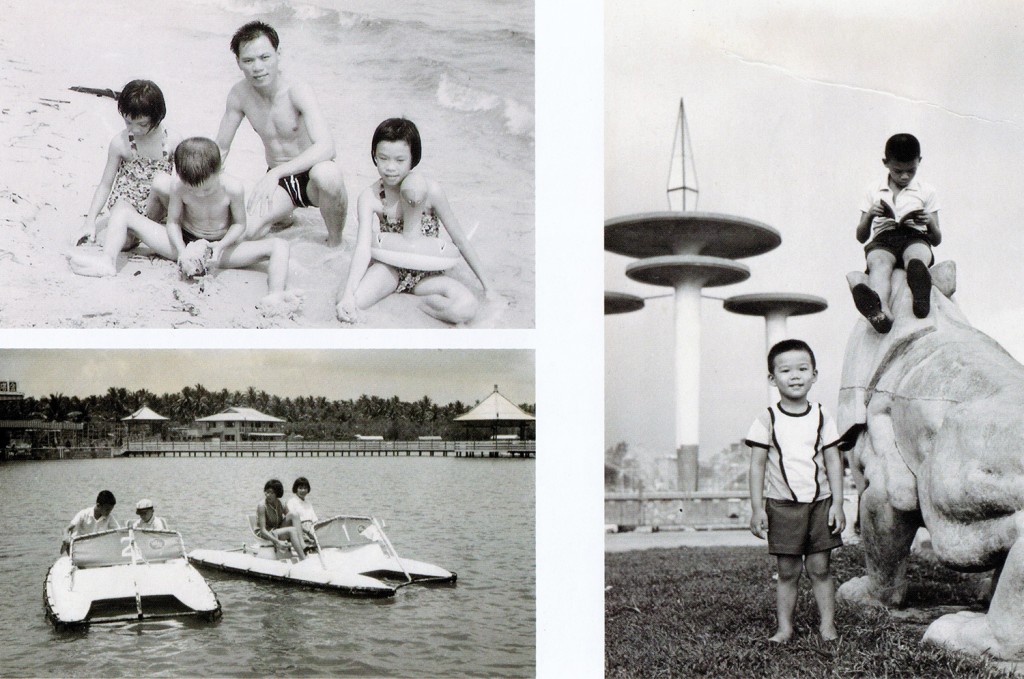
Top and bottom left: Changi Beach and Golden Palace Holiday Resort (金宫水上游乐场). Right: Kallang Park
Before digital ‘photoshop’, workers used sharpened lead to edit films and touch up prints using manual techniques. There were also times when newly weds would form long queues outside the photo studio for their wedding portraits to be taken. Photographs were almost always of happy occasions.
After retiring his photo studio business in 1987, Gin Bok turned to chinese calligraphy, a form of art he had been practising in the 1980s. Impressed and awed by his beautiful calligraphy, his studio clients would ask for his work, in forms of festive couplets and even writing requests.
Gin Bok passed away in May 2014. He had left behind a huge collection of diaries which he had been writing continuously over his lifetime. Writings, like photographs, are moments captured of a certain past. In a way, that moment has ‘died’ because it does not belong to the present. The act of reading, or looking at these photographs however, transports the viewer back to these times which are considered important to the writer or photographer. For a moment, albeit temporarily, the viewer re-lives in that moment and he/she gained an experience and understanding why that moment in time is so important to the writer/photographer. It might take a while for Angela before she has the courage to read and re-live those diaries her father left behind. When she did, she will realise that they are reminders of how her father talks, moves and thinks. These moments are constantly living and it is an entry to his understanding of the world.
The shop of ‘New City Photo Studio’ is currently an eatery specialising in black chicken tonic soup, owned by an old neighbour who knew the Kuet family for a long time while working nearby the shop as a stall assistant. Angela’s daughter is now a photographer, whose interest started after receiving her grandfather’s Leica camera on one of her birthdays.

2012 photo taken at the site of the former studio, showing Mr. Kuet and his wife together with the owner of the current shop.
All photo credits to Angela Kuet and Kuet Gin Bok.
Written and edited by Tan Wei Keong
